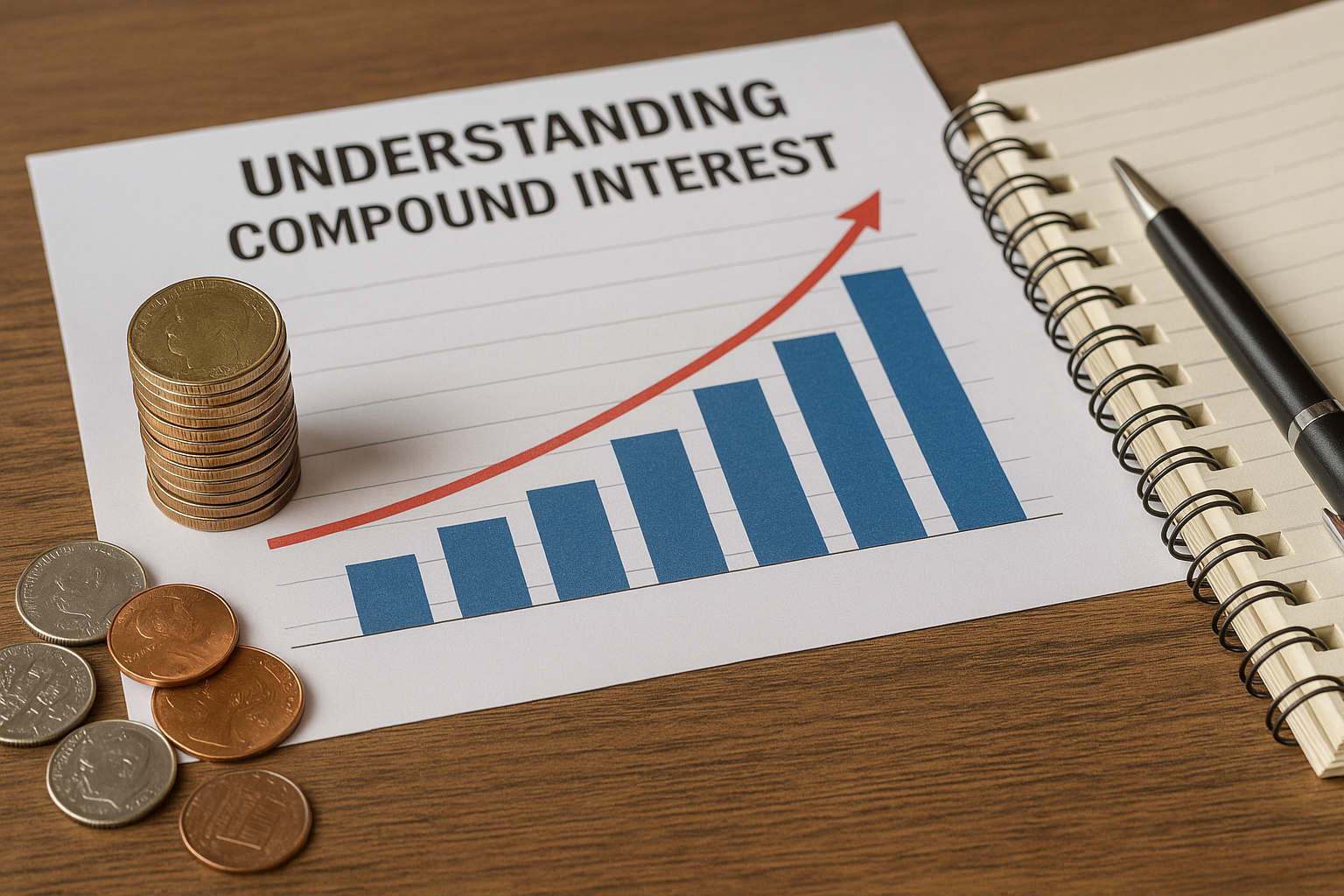Compound interest is often called the eighth wonder of the world—and for good reason. It’s a powerful financial principle that can work for or against you, depending on how you use it. When harnessed properly, compound interest becomes a key tool in building long-term wealth. The earlier you start, the greater the rewards. In this article, you’ll learn how compound interest works, how to make it work in your favor, and how to avoid falling victim to its negative side.
What Is Compound Interest?
Compound interest is the process of earning interest not only on your initial investment but also on the accumulated interest from previous periods. In simple terms, it’s “interest on interest.” Over time, this creates a snowball effect that dramatically increases the growth of your savings or investments. Unlike simple interest, which is calculated only on the principal amount, compound interest allows your money to grow faster and more efficiently.
How Compound Interest Works
Let’s break it down with an example. Suppose you invest $1,000 in an account that earns 5% interest annually. With simple interest, you’d earn $50 per year. But with compound interest, in the second year, you’d earn interest not only on the original $1,000 but also on the $50 earned the previous year. This means your new interest would be based on $1,050, leading to $52.50 in earnings, and the cycle continues. The longer your money compounds, the more exponential the growth becomes.
The Power of Time
Time is the most critical factor when it comes to compound interest. The earlier you begin investing or saving, the more time your money has to grow. For instance, if you start investing $200 per month at age 25, and earn an average annual return of 7%, by the time you reach 65, you could have over $500,000. If you wait until age 35 to start, your total could be nearly half that, even though you’re still saving the same amount monthly. The lesson is clear: start early, stay consistent.
Compound Interest in Saving vs. Investing
Compound interest applies to both saving and investing, but in different ways. Savings accounts, certificates of deposit (CDs), and money market accounts offer compound interest with lower risk and lower returns. Investments in stocks, mutual funds, and ETFs carry higher risk but also offer greater potential returns due to market growth and reinvested earnings. The key is finding a balance between safety and growth that matches your financial goals and risk tolerance.
The Dark Side: Debt and Compound Interest
Compound interest doesn’t only work in your favor—it can also work against you when it comes to debt. Credit cards, personal loans, and payday loans often charge compound interest on unpaid balances. This means your debt can grow rapidly if left unchecked. For example, carrying a $5,000 credit card balance with a 20% interest rate and making only minimum payments can cost you thousands in interest over time. Always pay off high-interest debt as quickly as possible and avoid carrying balances whenever you can.
Tips to Maximize Compound Growth
Start saving or investing as early as possible. Even small amounts make a difference over decades. Contribute regularly to retirement accounts like a 401(k) or IRA. Reinvest earnings rather than withdrawing them. Choose accounts or investments that compound more frequently—monthly compounding is better than annual. Be consistent, patient, and avoid interrupting the compounding process by withdrawing funds too soon.
Final Thoughts: Let Time and Discipline Work for You
Compound interest is one of the most powerful forces in personal finance. It rewards consistency, patience, and long-term thinking. Whether you’re building an emergency fund, investing for retirement, or saving for your child’s education, understanding and leveraging compound interest can set you on a path to financial success. Don’t wait to take advantage of it—the best time to start was yesterday, the second-best time is today.
